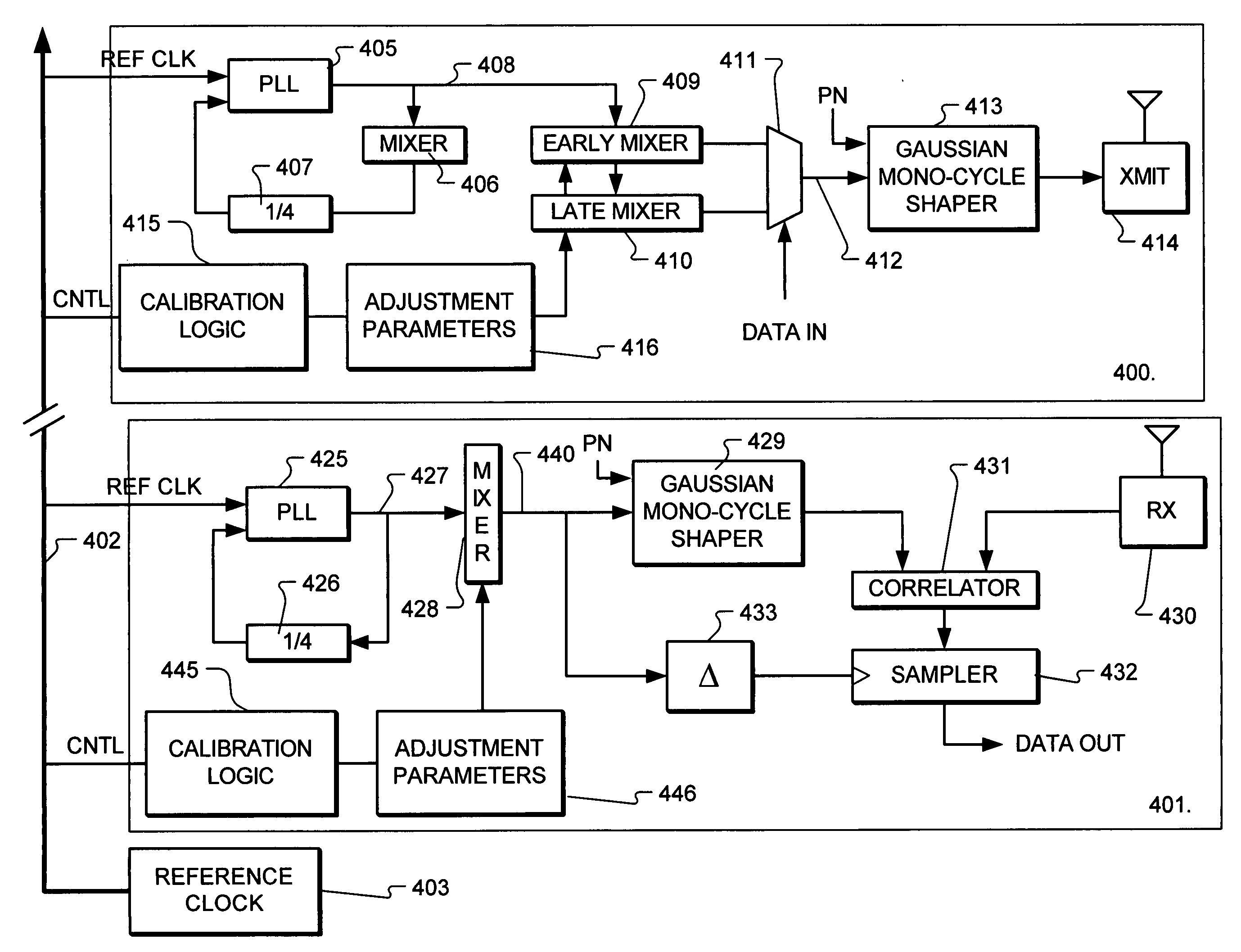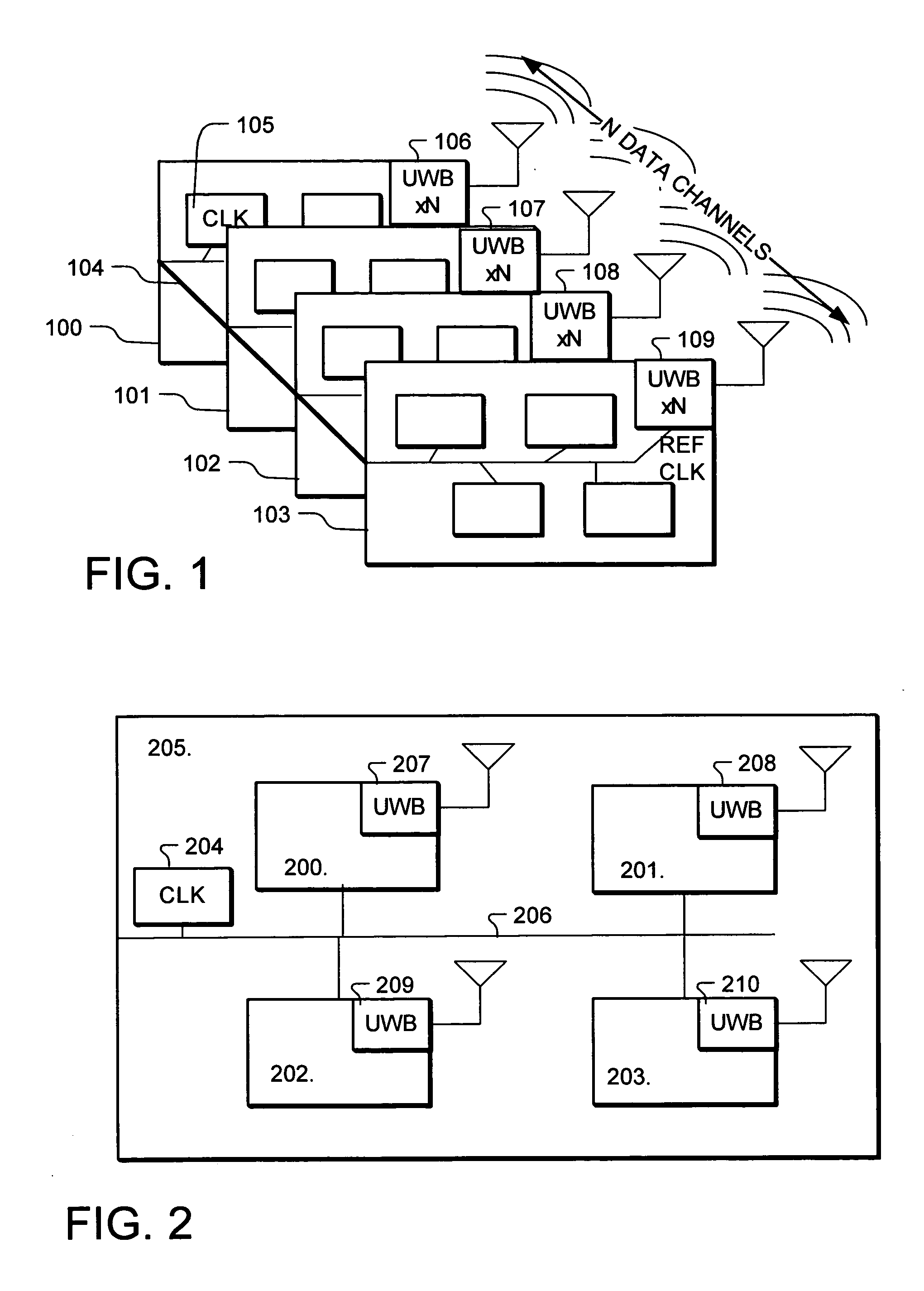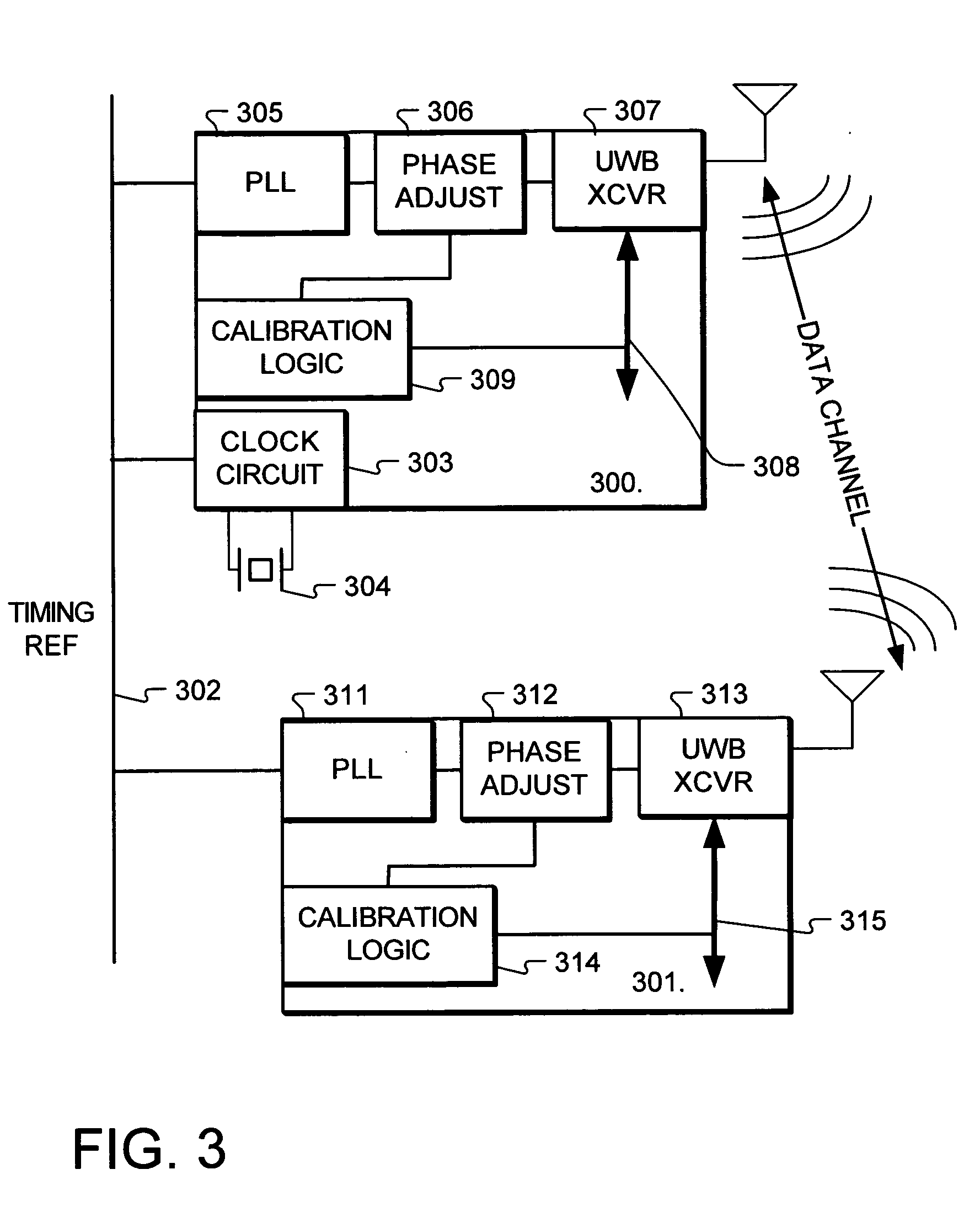Hybrid wired and wireless chip-to-chip communications
a chip-to-chip communication and wired technology, applied in the field of wireless and chip-to-chip communications, can solve the problems of distorted correlation between early and late pulses, uwb systems, and the requirement of precise timing sources at both the transmitter and the receiver, and achieves large system spatial capacity, precise timing alignment and mesochronous synchronization, and the effect of reducing the number of errors
- Summary
- Abstract
- Description
- Claims
- Application Information
AI Technical Summary
Benefits of technology
Problems solved by technology
Method used
Image
Examples
Embodiment Construction
[0029] A detailed description of embodiments of the present technology is provided with reference to the FIGS. 1-4.
[0030]FIG. 1 shows a basic architecture for deployment of a communication system in a high-performance data processing system, that includes a plurality of circuit boards 100-103 interconnected by a wired interconnect structure 104. At least one of the circuit boards, such as board 100, includes a clock circuit 105, which transmits a timing reference signal on the wired interconnect structure 104. Each of the plurality of circuit boards 100-103 includes an ultra-wideband transceiver 106-109. The ultra-wideband transceivers 106-109 are coupled to the timing reference signal on the wired interconnect structure 104, and synchronize transmission and receiving of ultra-wideband signals with reference to the shared timing reference signal. In the embodiment shown, each of the circuit boards 100-103 includes a plurality of ultra-wideband transceivers (xN), establishing a plur...
PUM
 Login to View More
Login to View More Abstract
Description
Claims
Application Information
 Login to View More
Login to View More - R&D
- Intellectual Property
- Life Sciences
- Materials
- Tech Scout
- Unparalleled Data Quality
- Higher Quality Content
- 60% Fewer Hallucinations
Browse by: Latest US Patents, China's latest patents, Technical Efficacy Thesaurus, Application Domain, Technology Topic, Popular Technical Reports.
© 2025 PatSnap. All rights reserved.Legal|Privacy policy|Modern Slavery Act Transparency Statement|Sitemap|About US| Contact US: help@patsnap.com



